“There comes a time in every woman’s life when the only thing that helps is a glass of champagne.” – Bette Davis
Dom Perignon, step aside. Although the famous monk is often credited with ‘inventing’ Champagne, in reality, the women of the region made it what it is today.
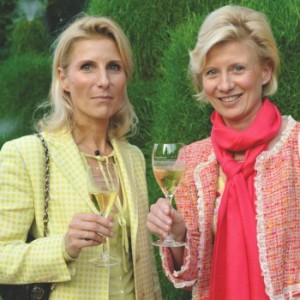 Two hundred years ago, Champagne’s major production was thin, acidic, still wine, not the bubbly symbol of luxury and celebration that we know today. Champagne’s evolution from coarse swill to refined elegance gives new meaning to the cliché that necessity is the mother of invention. In this case, ‘the mothers’–widows suddenly thrust into leadership of the Champagne houses–provided the vision necessary for the transformation.
Two hundred years ago, Champagne’s major production was thin, acidic, still wine, not the bubbly symbol of luxury and celebration that we know today. Champagne’s evolution from coarse swill to refined elegance gives new meaning to the cliché that necessity is the mother of invention. In this case, ‘the mothers’–widows suddenly thrust into leadership of the Champagne houses–provided the vision necessary for the transformation.
As you are probably aware, “true” Champagne only comes from Champagne, France and its outstanding quality and flavor is born of a unique grape-growing environment and a method of production that has been perfected over centuries.
But what you may not know is that when they buy Champagne, you also support a tradition of women’s empowerment and success in business.
Today there is an elite group of women involved in running Champagne Houses.
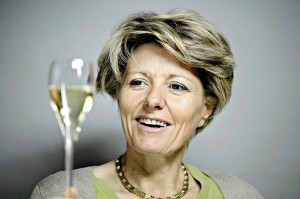 Cecile Bonnefond has been the president of Veuve Clicquot Ponsardin since 2001, bringing with her deep experience in the food and wine industry. She is the first woman to lead the company since the widow who created the brand 150 years ago and she has made sure that the “Clicquot Touch” — a special way of behaving, acting and liaising with customers and consumers that was dear to Madame Clicquot — continues to be a significant part of the Clicquot brand today. Now she’s taking her vast experience to another set of bubblies, Charles Heidsieck and Piper-Heidsieck, with the goal of raising their global profile.
Cecile Bonnefond has been the president of Veuve Clicquot Ponsardin since 2001, bringing with her deep experience in the food and wine industry. She is the first woman to lead the company since the widow who created the brand 150 years ago and she has made sure that the “Clicquot Touch” — a special way of behaving, acting and liaising with customers and consumers that was dear to Madame Clicquot — continues to be a significant part of the Clicquot brand today. Now she’s taking her vast experience to another set of bubblies, Charles Heidsieck and Piper-Heidsieck, with the goal of raising their global profile.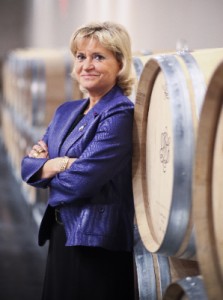 Carol Duval-Leroy has been the chairwoman of the Duval-Leroy House since 1991. She named one of her most awarded cuvees “femme de champagne” (woman of Champagne).
Carol Duval-Leroy has been the chairwoman of the Duval-Leroy House since 1991. She named one of her most awarded cuvees “femme de champagne” (woman of Champagne).- Nathalie Vranken manages the Vranken-Pommery House.
- Anne Malassagne, the great-granddaughter of Armand-Raphaal who founded the company, has been co-President of Champagne AR Lenoblesince 1993.
- Evelyne Roques-Boizel is a producer with Champagne Boizel.
- Alexandra de Nonancourt and Stephanie de Nonancourt are on the Management Board and Image Committee and are future owners of Champagne Laurent Perrier.
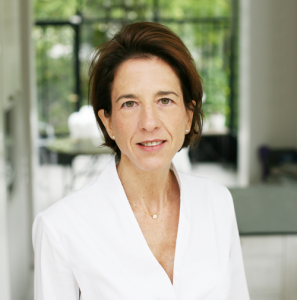
- Dominique Fleury is a member of the Executive Board of the Comite Interprofessionel du Vin de Champagne (CIVC), the trade association that groups all the grape growers and houses of Champagne, France.
- Beatrice Richard is a member of the Executive Board of the CIVC.
- Sandrine Girardot is the president of Champagne Chassenay d’Arce.
- Jocelyne Dravigny is the president of Champagne’s Federation des Cooperatives de Champagne — the association representing co-operatives.
- Sophie Signolle is the president of the Commission des Viticultrices du Syndicat General des Vignerons, the wine-growers union.
- Sandrine Logette-Jardinis the winemaker, or chef de caves, of Champagne Duval-Leroy.
- Aurelie Barrat is the oenologist of Champagne Le Brun de Neuville.
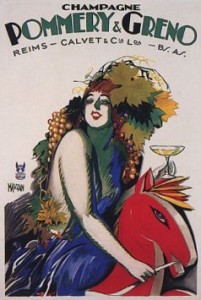 The women in Champagne’s history have also contributed enormously to the development and production of this world-renowned wine — often long before women were in management in other industries.
The women in Champagne’s history have also contributed enormously to the development and production of this world-renowned wine — often long before women were in management in other industries.
Veuve Clicquot
Did you know “veuve” is French for “widow”? Taking its name from the widow who inherited the house from her husband in 1805, Madam Clicquot established her wine throughout the royal courts of Europe, most notably the courts of Imperial Russia. She ran the company for more than 60 years.
Bollinger
Did you know Lilly Bollinger was a pioneer in customer trends? She took over Bollinger in 1941 and, armed with business savvy and a pioneering vision, she invested heavily in public relations and marketing campaigns, paying close attention to trends and to customers’ taste preferences.
Pommery
Did you know that Louise Pommery created the first Brut Champagne that was a commercial success? Widowed at the age of 39, Jeanne Alexandrine Louise Melin took over her husband’s modest business specializing in red wines in 1858. She spent the next 30 years turning what had been a small specialty business into one of the largest and most prosperous of all Champagne houses. One of her many significant accomplishments was the creation of the first successful Brut Champagne, in 1874.



 0
0